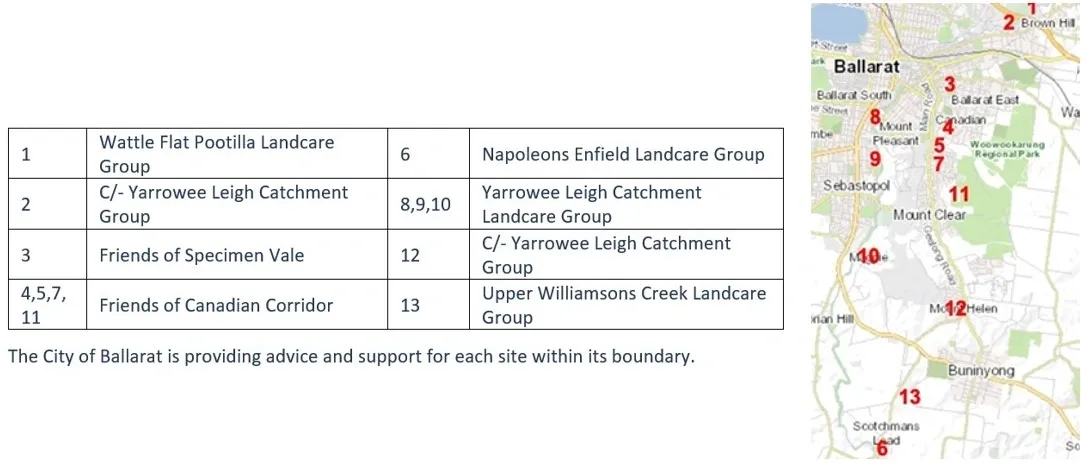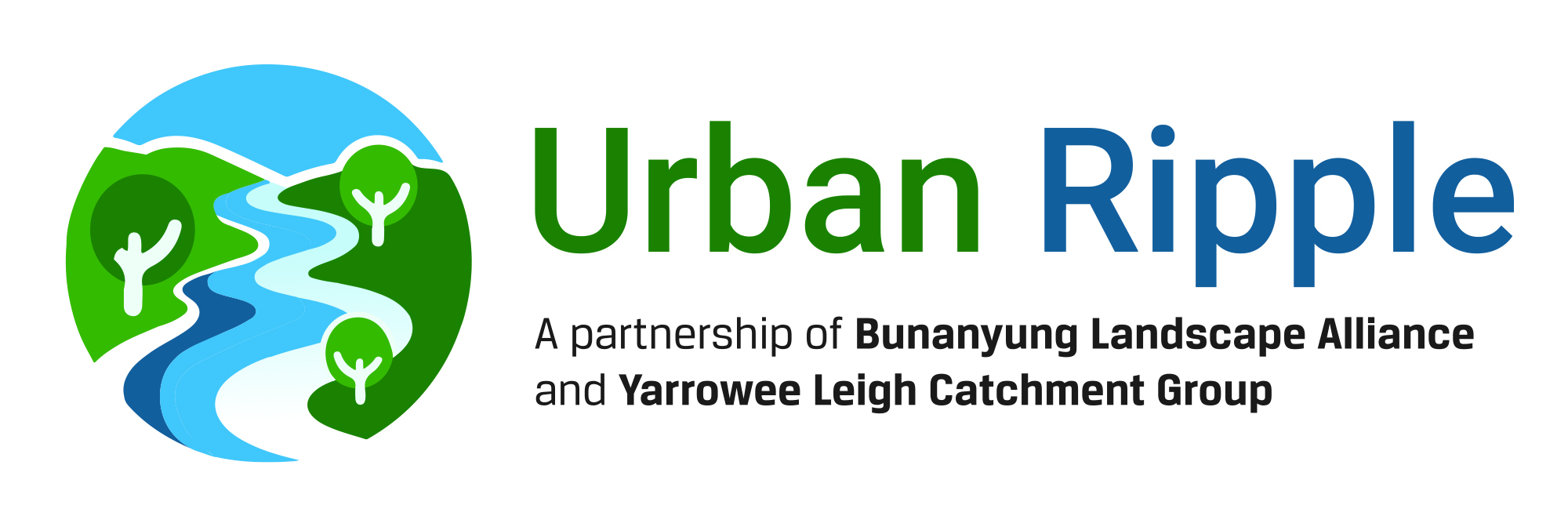October 2024
The Bunanyung Landscape Alliance (BLA) in partnership with the Yarrowee Leigh Catchment Group (YLCG) was, in March 2024, awarded, a Victorian Government Green Links Program Grant of $701,000 to deliver a project titled: Urban Ripple: Restoring our Yarrowee River and its Little Creeks during 2025 and 2026. The partners are working with eight Landcare groups to deliver the planting of 39,500 trees and shrubs on 80.5 hectares of land along 8.6 km of local creeks at 13 sites.
“Waves” is intended to be an occasional publication, designed to keep Landcare groups, volunteers and the community informed about the Urban Ripple project.
Stephen Carey Chair BLA and Heather Fagg Chair YLCG
13 selected sites along the Yarrowee River and Canadian Creek
The project encompasses 13 sites selected for native vegetation restoration. Each site will have an ecological assessment undertaken to be followed by weed removal, site preparation and planting over the next two years. Twelve of the sites are on public land and one is on private property on a small unnamed tributary of the Canadian Creek.
Eight Participating Landcare Groups
The Urban Ripple project is funded by the Victorian Government’s Green Links Program. The Bunanyung Landscape Alliance and the Yarrowee Leigh Catchment Group are partners in the oversight and delivery of the project with the following groups and sites.

Seedling supply and provenance
The Seeding Victoria seed bank has sourced local seed for the propagation of the plants. Several local community and private tree grower nurseries are engaged in the propagation and growing of the seedling trees, shrubs and grasses. The Urban Ripple Project Officer has coordinated the selection, ordering and growing of the trees on behalf of Landcare groups for plantings in 2025.
Site Ecological Audits
Central Highlands Environmental Consultancy has conducted an ecological audit of each site to identify plant species present. Each report summarises special ecological features, planting recommendations [SC1] and the species to be planted. The Corangamite Catchment Management Authority’s online Floristic Map Unit (FMU) data are used to identify the species most suitable for each site. This is particularly helpful for the more heavily degraded sites and where remnant plant species are hard to find.
The combination of ecological audits and FMU will provide confidence in plant selection. Additional recommendations on planting density and species numbers for each site will ensure the plantings are in harmony with the local landscape and habitat.
The audit is also used to identify weed-control measures where necessary. Knowing what native habitat already exists allows weed controllers to fine-tune their weed-removal works, thus saving money and preserving existing habitat.
How to join in
The large number of seedlings to be planted in each year means there will be numerous opportunities for friendly community groups, families and businesses to be involved in a tree planting near their locality. Volunteers are most welcome. Register w[SW2] ith your local Landcare group or with the Urban Ripple Project Officer E: projectofficer@leighcatchmentgroup.org


